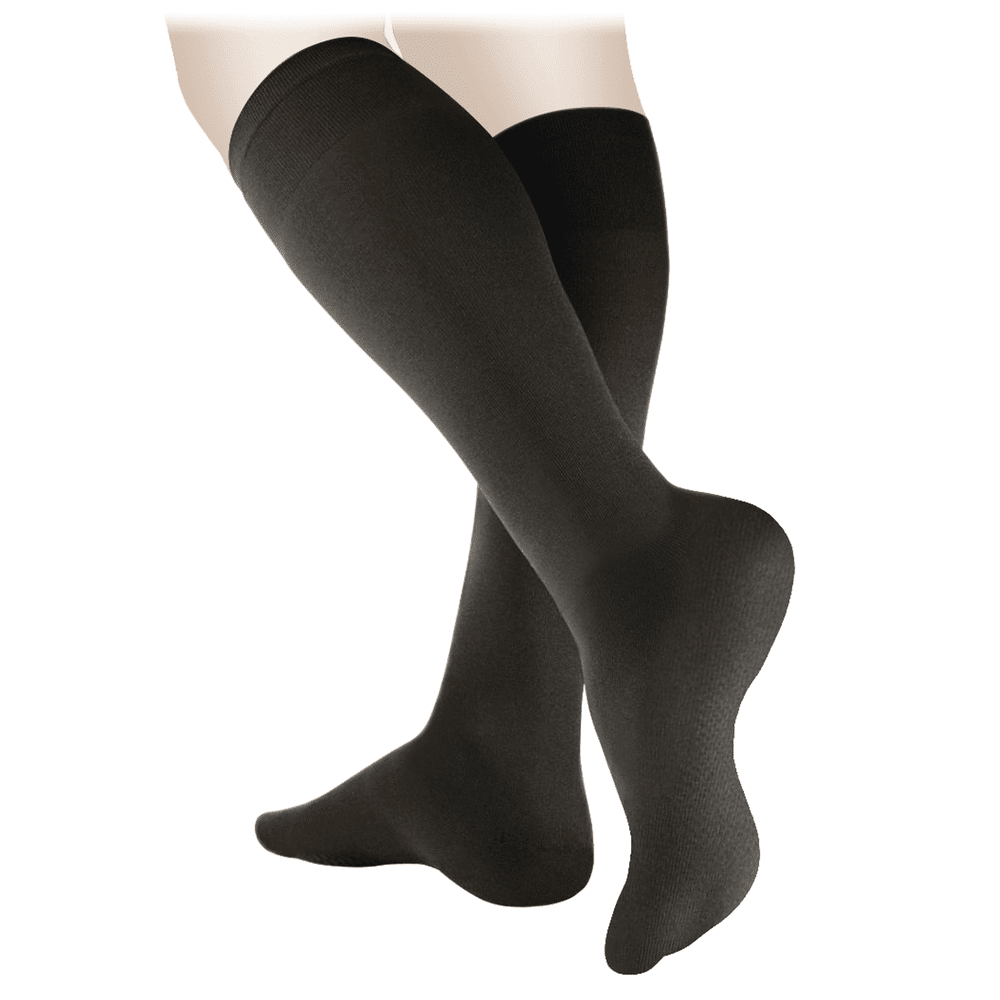While many people may easily observe light, bluish-green veins at various places on their legs and experience no discomfort whatsoever, others may find thick, bulging, blue veins that result in a feeling of heaviness and pain. In fact, nearly 40 million Americans have or will have problems with varicose veins at some point during their lives, describing symptoms of throbbing, cramping, and even mild swelling of the ankles and feet. If you are experiencing this sort of discomfort and learn on how you can get rid of veins, compression therapy at the Venus Vein Clinic in Omaha, Nebraska may be the first step on your road to recovery.
What Is Compression Therapy?
Compression therapy involves wearing compression stockings in order to improve circulation and ensure that blood is flowing well to and from your heart. Generally, the stockings give a gentle squeeze to the legs in order to facilitate the desired result. In addition, added compression near the feet and ankles also increases blood flow. Many patients will wear stockings all day long, while others may benefit from wearing them at nighttime as well. The amount of compression needed varies by patient, and the doctor will determine how much compression each individual needs.
Evaluation and Diagnosis
Once you book an appointment for your evaluation, a nurse will gather your medical history from you. The doctor will then perform a physical exam, which may include looking at your legs when you stand and sit to determine if there is any swelling. You will be asked about any aching or discomfort in your legs as well.
Next, a vascular technician will conduct a vascular ultrasound, which consists of running a small, hand-held device against the skin to better investigate how your valves are functioning. This noninvasive test allows images of your vasculature to be displayed on a monitor. All tests and discussion of treatment options can be completed in about an hour.
Is Compression Therapy Right for Me?
If we make the determination that the less invasive treatment of wearing compression stockings is the best option for you, we will review with you the best course of action based on your particular diagnosis. In addition to prescribing compression garments, we may also recommend exercise, losing weight, and avoiding wearing tight-fitting clothes. We will caution you to avoid sitting or standing for long periods of time and will suggest that you keep your legs elevated as much as possible. All of these suggestions can improve blood flow and help decrease pain.
As far as wearing compression stockings, we will recommend the appropriate level of compression for you based on her exam findings. Compression levels range from mild to extra firm, but typically, a moderate level of compression is prescribed for those suffering from varicose veins. We will also make a determination about the proper number of hours per day—and perhaps night—that you should be wearing the stockings. It is important to remember that each person’s experience with the therapy may differ.
Compression Therapy at Home
In all likelihood, and assuming you are not wearing the stockings 24 hours per day, the doctor will recommend that you put on your compression stockings before you even lower your legs from the bed in the morning. Since blood flows better when your body is in a horizontal position, the vertical positions of sitting or standing can compromise this blood flow. This may explain why your calves and ankles feel better in the morning but ache by the end of the day. In other words, the sooner you begin your compression therapy for the day, the better.
When putting on the stockings, be sure to avoid wearing rings, which can snag the garment, and hand lotion, which can make it difficult to grasp the fabric. Rather than simply pulling up the stocking, roll it upward, making sure to avoid any wrinkles or buckling behind the knee, which can cut off circulation. A smooth fit is desirable, and in no time at all, compression therapy will just become a natural part of your life.
Once you’ve begun wearing compression stockings on a daily basis, it is also important that you properly care for your garments. Always hand wash the stockings in cold or tepid water, making sure to use mild soap or detergent. Avoid using fabric softener and be sure to hang your stockings to dry, rather than putting them in the dryer. This will help ensure that your garments last longer and remain effective.
Improve Your Health and Appearance
The obvious physical benefits to compression therapy are increased circulation and reduction of pain, heaviness in the legs, and overall discomfort. Additionally, however, patients may notice an improved appearance in their legs as large, bulging veins are lessened. Because of all of these physical improvements, you may feel better mentally, as well.
Since compression therapy can be prescribed as an outpatient service and is noninvasive, anyone experiencing aching due to varicose veins may find this treatment the answer to their problems. As long as the diagnosis is based on medical findings and is not simply a cosmetic treatment, it is often covered by insurance, which is another reason not to wait for a solution to your discomfort. If you are interested in starting on the path to a healthier, happier you, contact the experienced team at Venus Vein Clinic in Omaha, Nebraska for a consultation and take the first step to a better life!

